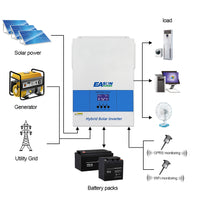What is a Maximum Power Point Tracking Controller?
The maximum power point tracking controller (MPPT) is a crucial component in solar energy systems. It is designed to maximize the energy harvested from solar panels by adjusting the electrical operating point of the modules. By continuously monitoring the output voltage and current, the MPPT ensures that the solar panels operate at their optimal efficiency, even under varying environmental conditions.

How Does MPPT Work?
At its core, the maximum power point tracking controller uses sophisticated algorithms to determine the maximum power point (MPP) of the solar panels. This is the point at which the product of voltage and current is at its highest. The controller adjusts the load on the solar panels to maintain operation at this point. But how does it achieve this? Here are the key steps:
- Continuous monitoring of voltage and current output.
- Calculation of the power output in real-time.
- Adjustment of the electrical load to align with the MPP.
Benefits of Using a Maximum Power Point Tracking Controller
Implementing an MPPT in a solar energy system offers several advantages:
- Increased Energy Harvesting: By optimizing the power output, MPPTs can increase energy production by up to 30% compared to traditional systems.
- Improved Efficiency: MPPTs ensure that solar panels operate efficiently under various weather conditions, including partial shading and temperature fluctuations.
- Cost-Effectiveness: Although MPPTs may have a higher initial cost, the long-term energy savings can outweigh these expenses.
Choosing the Right Maximum Power Point Tracking Controller
When selecting a maximum power point tracking controller, consider the following factors:
- Compatibility with your solar panel system.
- Rated power capacity to match your energy needs.
- Efficiency ratings and performance under varying conditions.
For a comprehensive selection of solar charge controllers, visit .
Conclusion
In summary, the maximum power point tracking controller plays a vital role in enhancing the efficiency of solar energy systems. By understanding its function and benefits, users can make informed decisions that lead to greater energy production and cost savings. As solar technology continues to evolve, MPPTs will remain essential for optimizing renewable energy solutions.








